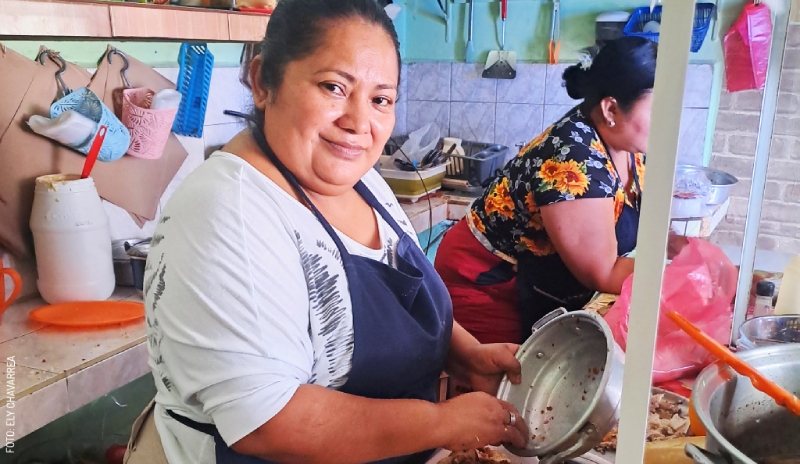- Home
- Gastronomy
- Yucatecan Gastronomy
Yucatecan Gastronomy
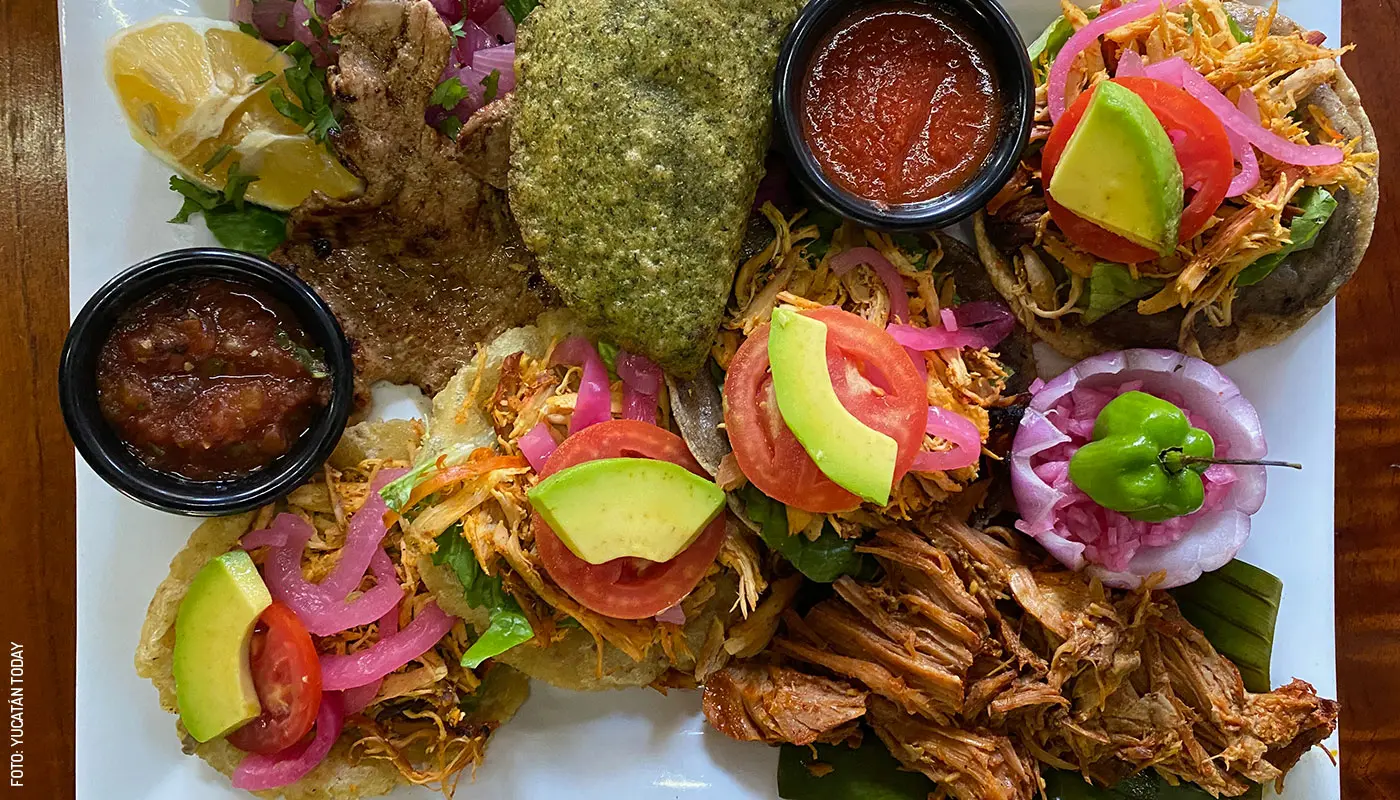
The Ultimate Guide to Yucatecan Cuisine
Yucatán is home to rich and traditional cuisine that mixes ingredients common to all of México (such as corn, tomato, and beans), with many products that are unique to the state (such as Habanero peppers, bitter orange, and the popular Achiote (annatto seed paste) that gives color and flavor to many meals.
Yucatecan cuisine is globally renowned because of its culturally rich tradition, which not only keeps Maya identity alive, but also incorporates Spanish, Lebanese, and even Caribbean influences. Here’s a guide to some of its most iconic dishes.
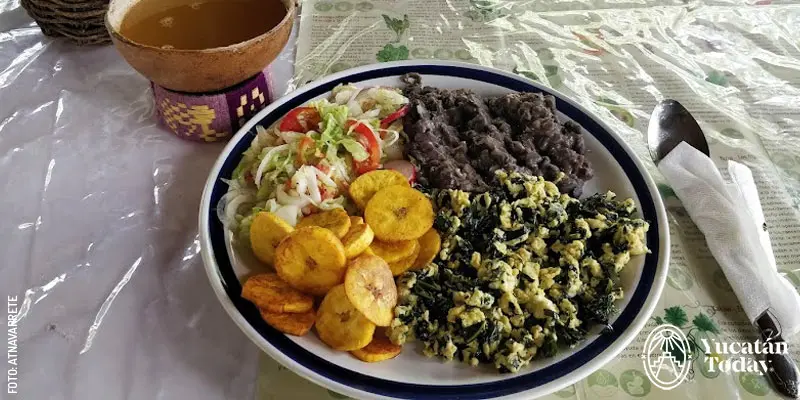
Huevo con Chaya (eggs with Chaya). As the name suggests, it consists of scrambled eggs with the traditional Chaya leaves (Cnidoscolus chayamansa or tree spinach) that grow so abundantly in the region. As its English name suggests, the taste of Chaya will remind you of spinach, but different. Huevo con Chaya is traditionally a homemade dish.
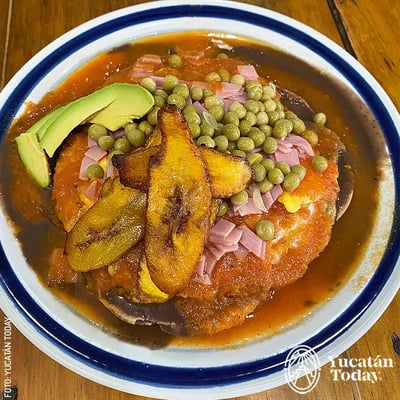
Huevos Motuleños. This dish consists of fried eggs served on top of a fried tortilla with beans, then covered with tomato sauce, chopped ham, cheese, and peas. It is usually adorned with fried plantains. It’s a very traditional breakfast dish that also makes for a hearty lunch. And while Huevos Motuleños were created in the Magical Village of Motul, the man behind the recipe is said to be Don Jorge Siqueff, founder of Siqueff restaurant. Read our article about him.
Tacos y Tortas de Cochinita Pibil or Lechón al Horno. See below.
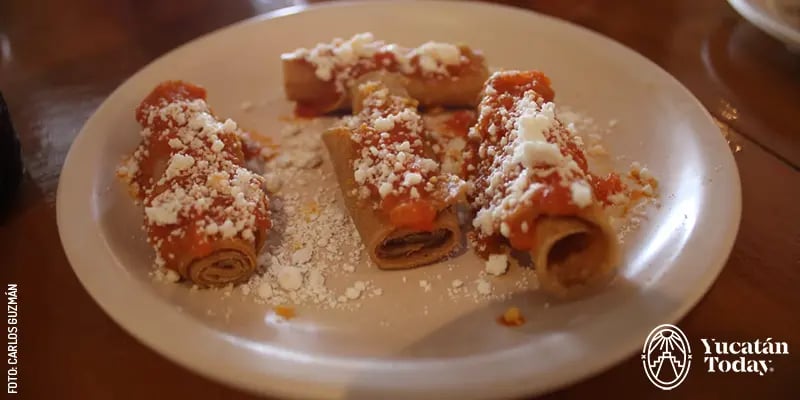
Codzitos. Crunchy corn tortilla tacos that are usually filled with...absolutely nothing. They’re just the crunchy taco shell, covered with tomato sauce and sprinkled with Sopero cheese (similar to Cotija), yet surprisingly tasty.
Pickled potato salad. This tangy dish may sometimes be made with sliced sausages, but you’ll find that the most abundant ingredients are potatoes, onions, and sometimes cilantro; be wary when trying it, since some places throw in slices of Habanero. It’s a good idea to ask as soon as it’s served.
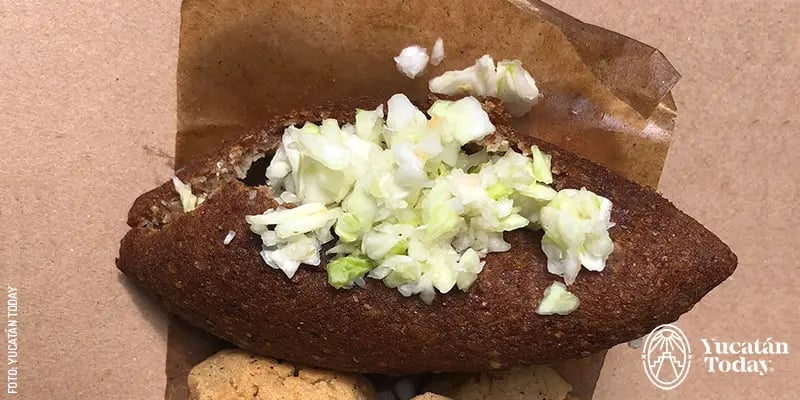
Kibis. Kibis are a tropicalized version of Lebanese kibbeh; you’ll find them in a variety of shapes, price ranges, and presentations, but usually served with pickled onions, cabbage, or both. In cantinas, they are usually served as small patties, about five centimeters in diameter; as street food, you’ll see them transported in containers that resemble fish tanks, oval-shaped like an American football. These are hollow inside; the “Kibero (Kibi vendor)” fills them with pickled onions and cabbage when handing them to you unless you ask otherwise. Lebanese restaurants serve more authentically Middle-Eastern versions.
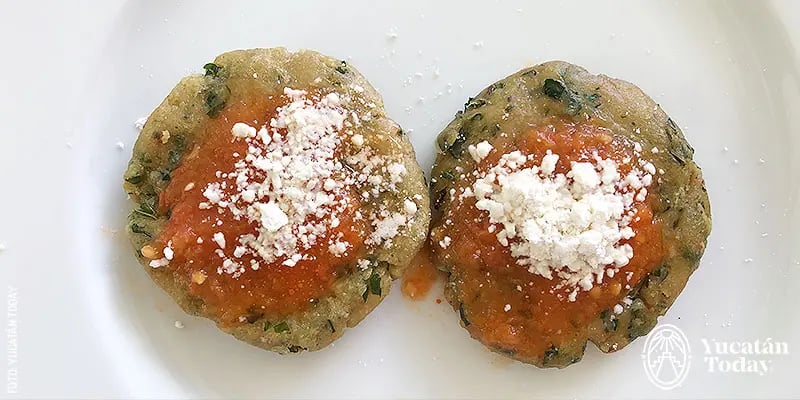
Chayitas. Presentations vary, but these are usually fried masa with chopped Chaya, sometimes served with tomato sauce, but sometimes with Xnipek (chopped tomato, onion, cilantro, bitter orange, and, optionally, Habanero).
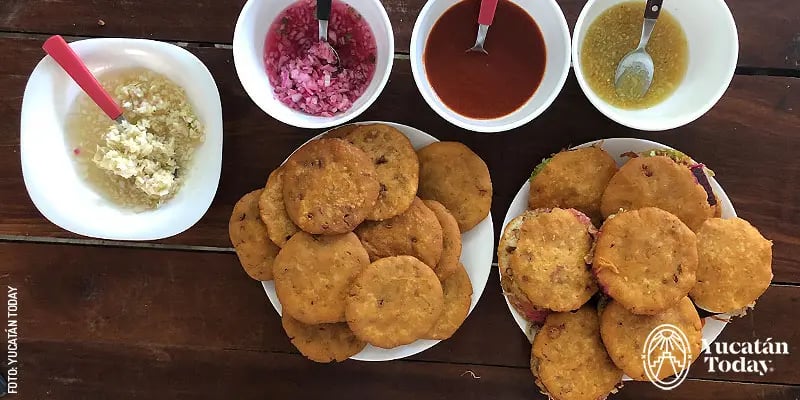
Polcanes. Though some presentations might look similar to what you might know as “Gorditas,” authentic Polcanes are distinguished by their particular shape, similar to a snake’s head (Pool K’aan, in Maya). Fillings may vary, but the traditional one is Tooksel, which is a vegan-friendly dish made with iibes (lima beans, Phaseolus lunatus) and ground Pepita (pumpkin seed).
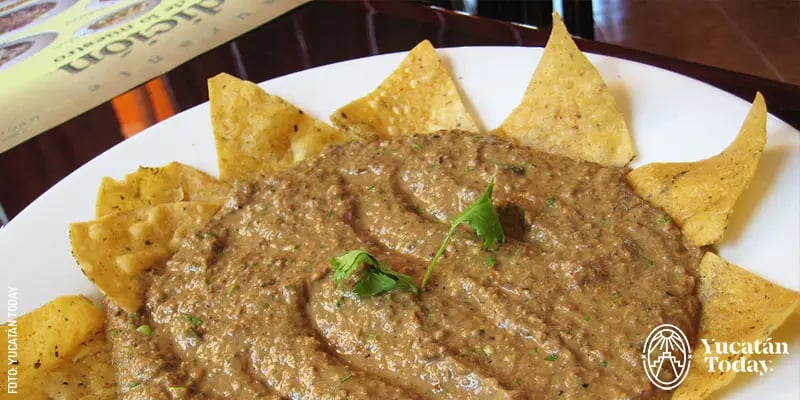
Sikil P’aak. A traditional dip made with toasted pumpkin seed, cilantro, and roasted tomato. It’s another great vegan snack, usually served alongside tortilla chips.
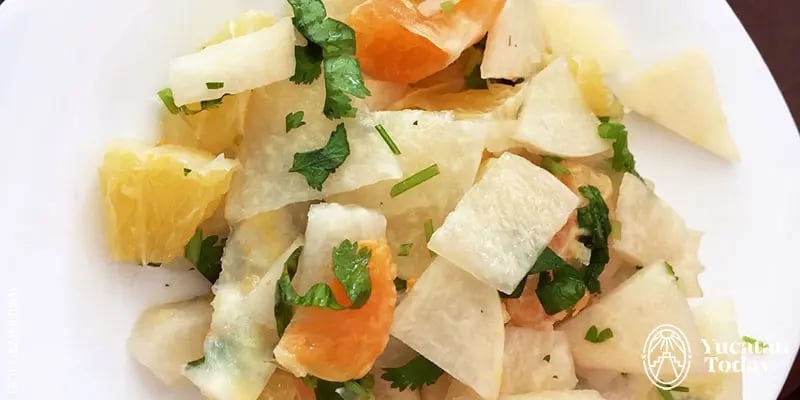
Xe’ek’. This refreshing salad is made with jicama and citrus, usually oranges and mandarins. Some people add ground chili—either Maax (Capsicum annuum var. glabriusculum) or Habanero—, and some also include cilantro. However you try it, it’s a very traditional snack, especially in the fall, which is the season for both jicama and citrus. “Xe’ek’” is also the word we use in Yucatán to describe something messy: “Your room is a Xe’ek’!”
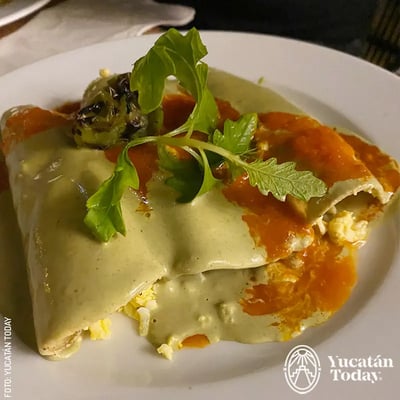
Papadzules. These tacos are filled with chopped hard-boiled egg and covered in two sauces: one is made with toasted pumpkin seed and the other is a tomato sauce. Ideal for vegetarians and omnivores alike.
.jpg?width=800&height=400&name=Cocina-Yucateca-sopa-de-lima-by-Yucatan-Today%20(1).jpg)
Sopa de Lima. A very flavorful chicken broth seasoned with local Yucatecan Lima (a different variety from the regular green lime). It is served with shredded chicken or turkey, fried tortilla strips, and sliced Lima.
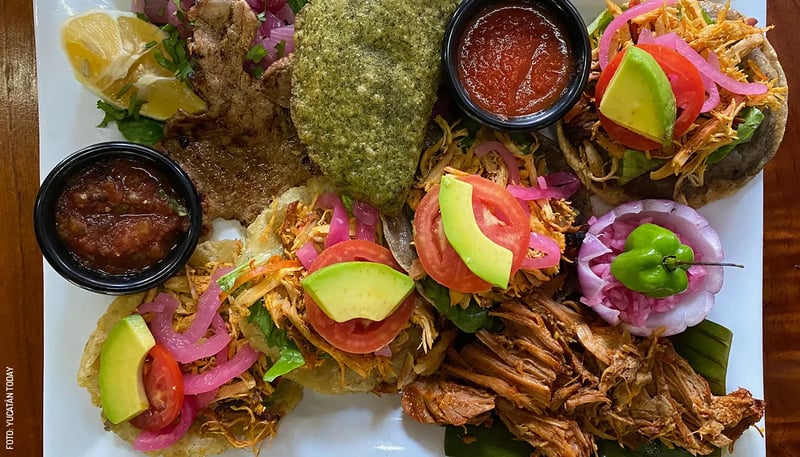
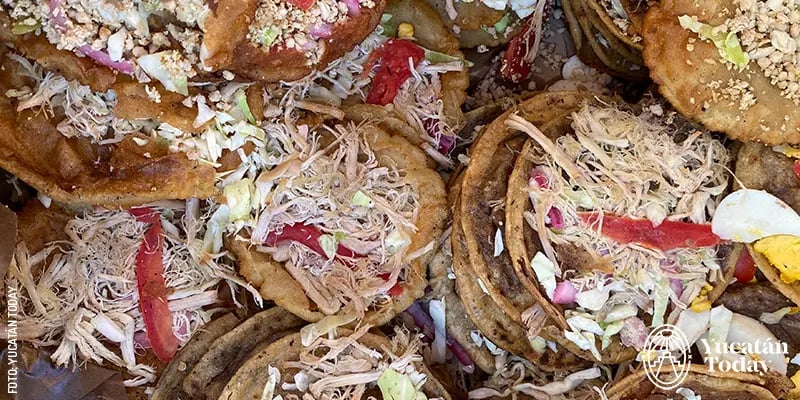
Panuchos and salbutes. These two dishes both consist of fried, hand-made tortillas topped with lettuce, tomato, cucumber, onion, avocado, and a protein that is traditionally shredded chicken, turkey, or sliced hard-boiled eggs. The difference is that Panuchos are crunchy and the tortilla is filled with refried black beans. The Salbut’s tortilla is fluffy. Nowadays, both Panuchos and Salbutes are commonly served with more elaborate protein options, such as Poc Chuc, Relleno Negro, and even Cochinita Pibil.
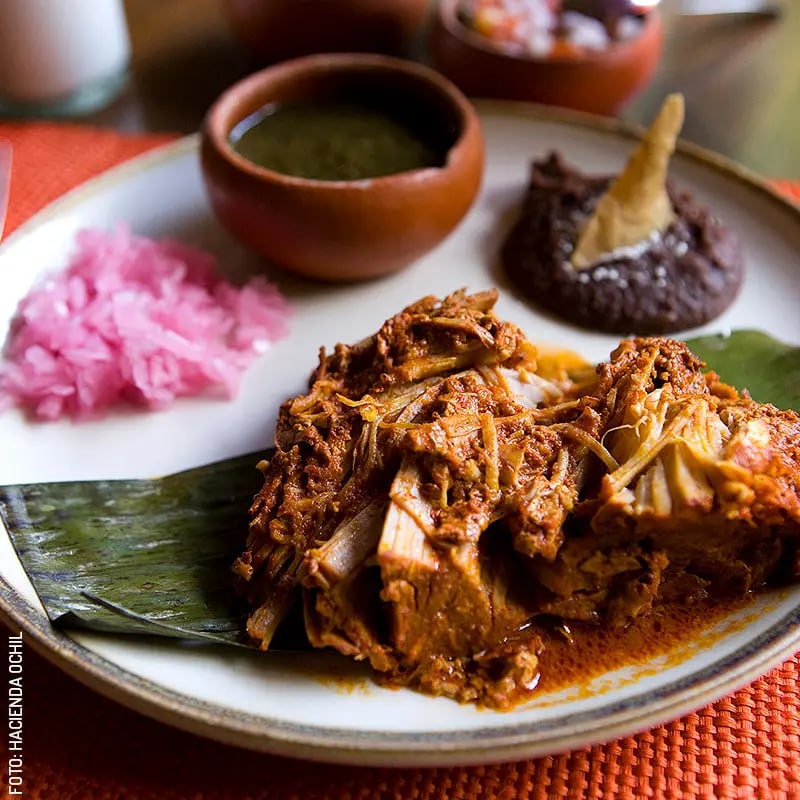
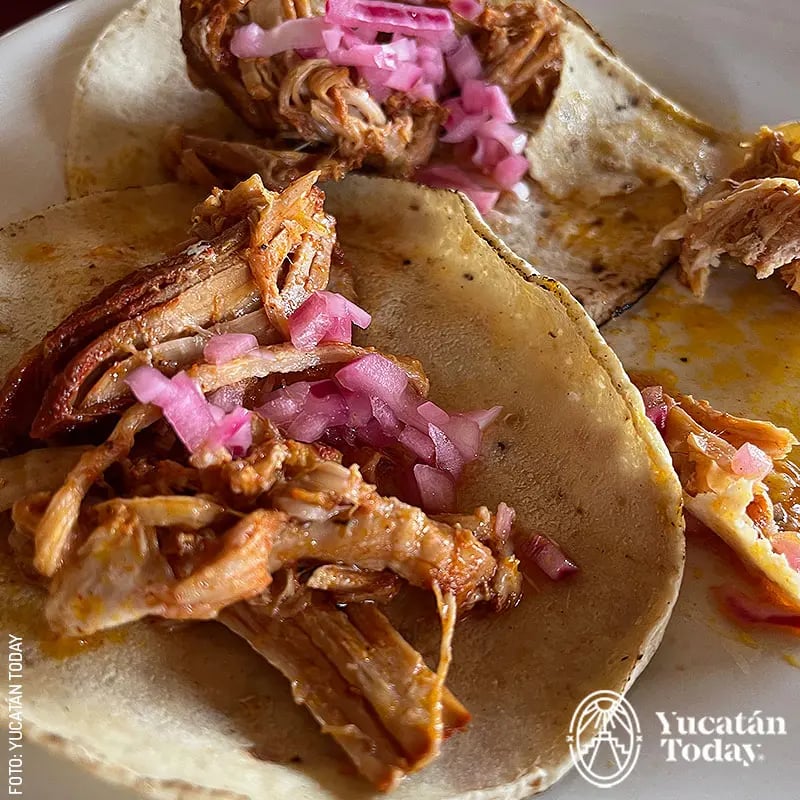
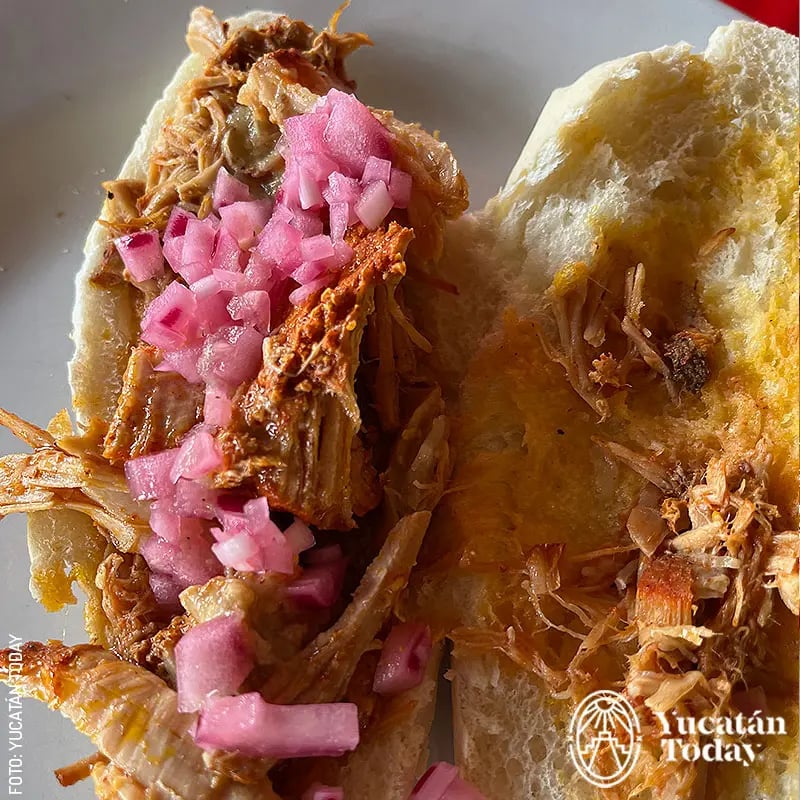
Cochinita Pibil. Perhaps Yucatán’s best-known dish, Cochinita Pibil is made with pork marinated in Achiote paste and bitter orange juice. It is then wrapped in banana leaves and baked slowly either in a regular oven or in a Píib, or traditional underground oven; when made this way, it’s usually referred to as “Enterrada.” It’s served in tacos, Tortas, or on its own with red onion.
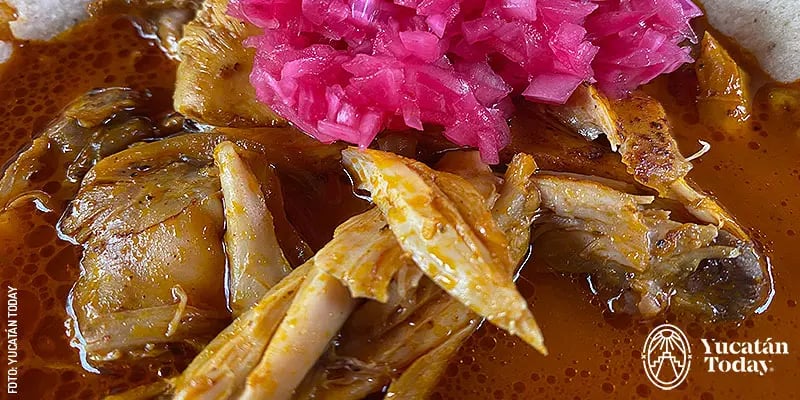
Pollo pibil. A poultry alternative to Cochinita Pibil, but, unlike Cochinita, it is usually served with rice and beans in addition to the customary tortillas.
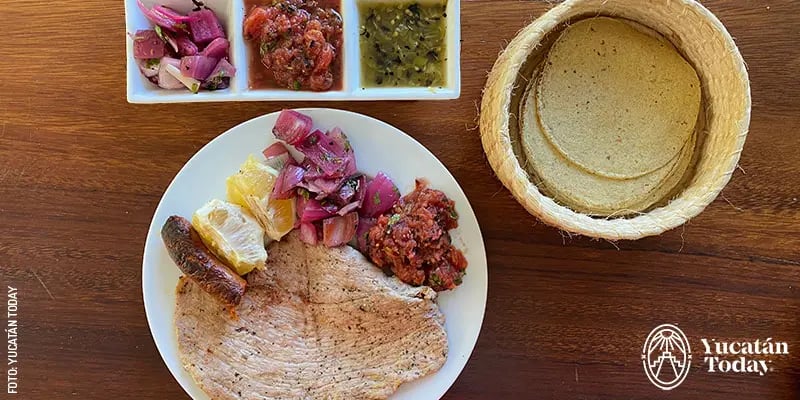
Poc Chuc. Roasted pork filet served with bitter orange, red onion, tomato sauce, avocado, and Habanero on the side. It’s usually accompanied by “Frijol Colado,” a blended bean soup. It’s a great choice if you’re looking for a somewhat lighter option while eating out in Yucatán.
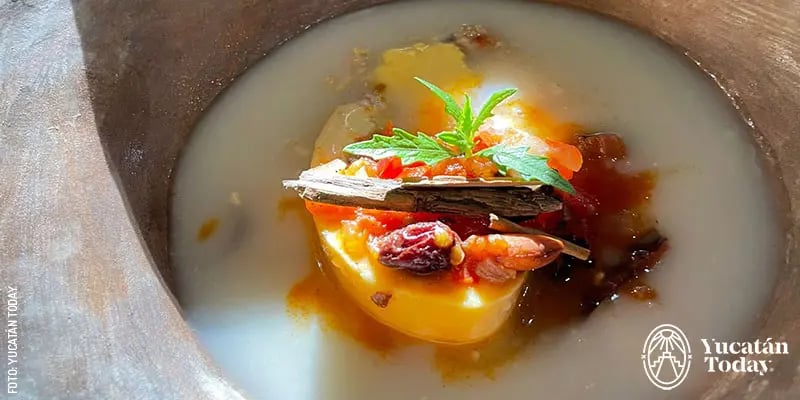
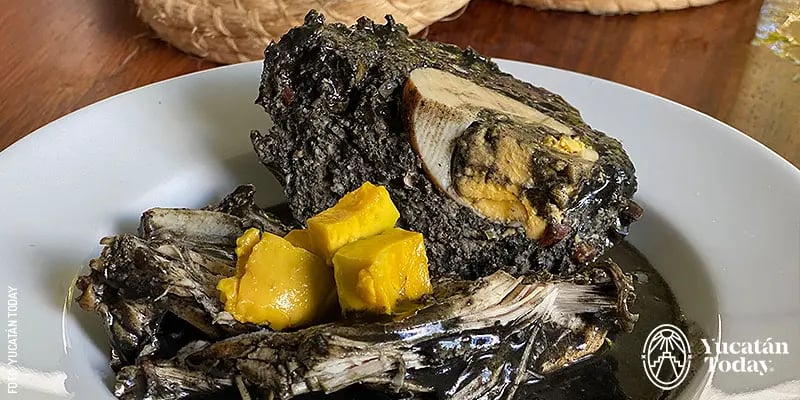
Relleno negro. This traditional pork and turkey dish is seasoned with a spice blend made from charred chiles and herbs that not only make it spicy and tasty, but provide its iconic black coloring. This dish used to be served at traditional weddings and it’s one of the oldest recipes in our regional cuisine.
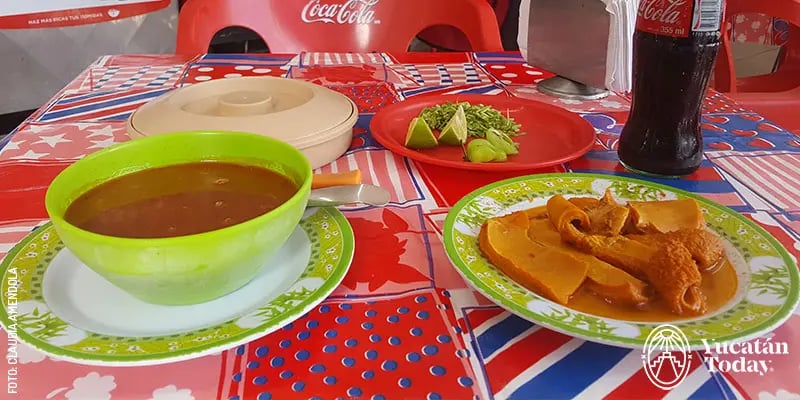
Mondongo Kabic. This is a very thick broth made from beef stomach and hooves. These are marinated in Achiote, garlic, and lots of bitter orange juice. It is served with whole Habanero peppers, onion, chives, and cilantro. You can usually find it at markets on the weekends.
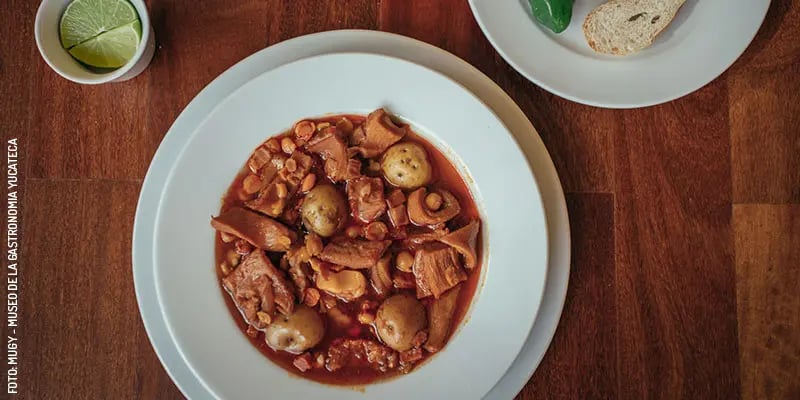
Mondongo a la Andaluza. Similar to Kabic, a beef stomach and hoove broth, but with the addition of traditionally Spanish ingredients, such as sausage, bacon, ham, paprika, and chickpeas.
Puchero. The best known version incorporates three types of meat: chicken, pork, and beef, alongside noodles and many vegetables like squash, chayote, and carrots. It’s served with Salpicón (a different version of Pico de Gallo made with radish, cilantro, and bitter orange) for the broth, plus a dish so everyone can “Puch” (mash) their vegetables and meat.
Chocolomo. Despite what its name might suggest, there’s nothing chocolatey about this dish; it comes from the Maya word Chokoj, which means hot. It’s a beef loin broth prepared with offal, garlic, and onion, served with a garnish of radish, cilantro, bitter orange, and optionally, Habanero peppers.
Lechón al Horno. Incredibly tender and slowly roasted pork meat. Alongside Cochinita, Relleno Negro, and Asado, it’s one of the most popular street breakfast options, usually served in tacos or tortas with Xnipek. If you’re early, you get a deliciously crunchy bit of pork skin, called “Cáscara.”
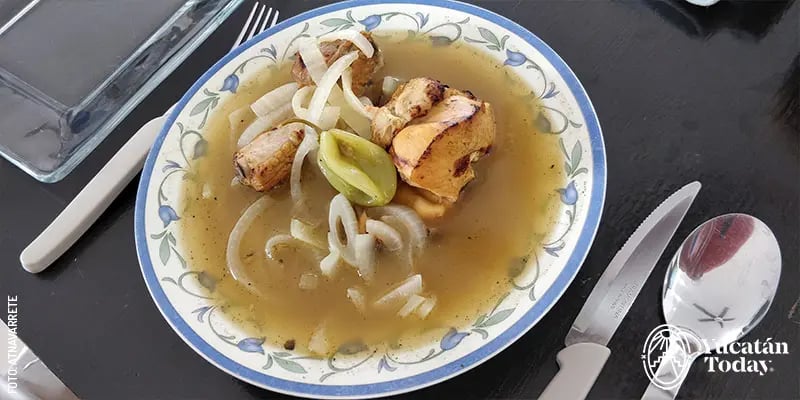
Escabeche oriental. Charcoal-grilled turkey or chicken, seasoned with onion, pepper, sour orange, and local herbs. It owes its name both to its place of origin (Eastern Yucatán) and the eastern spices (such as cinnamon) it incorporates. The meat can be either in pieces or shredded, served in the broth with plenty of onion and Xcatic pepper.
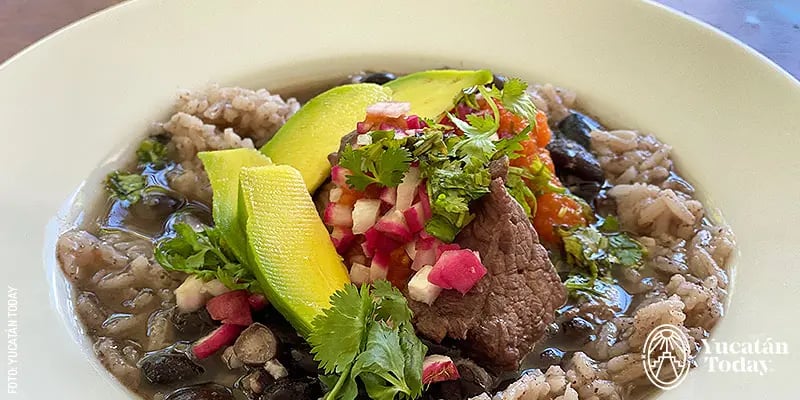
Frijol con Puerco. A black bean broth with pieces of cooked pork. It is served with rice (cooked in bean broth) and topped with finely chopped radish, cilantro, onion, and tomato sauce. It’s Yucatán’s official Monday meal!
Relleno blanco. Turkey served with a ground pork “meatball” that is seasoned with capers, oregano, raisins, and olives. It’s then bathed in K’ool and tomato sauces.
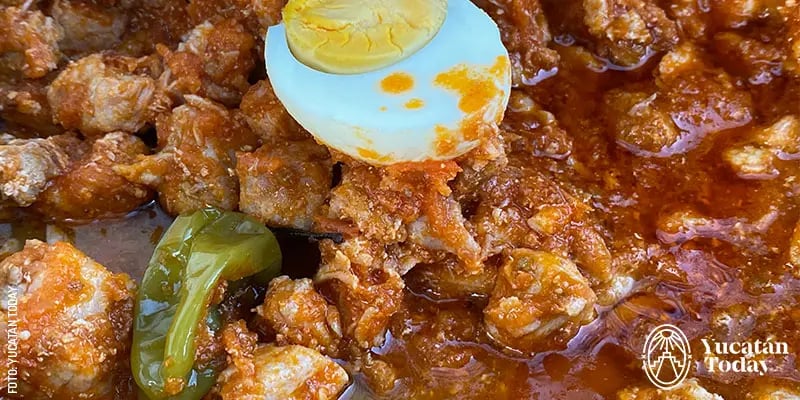
Lomitos de Valladolid. Diced pork loin prepared with a slightly spicy tomato sauce. It’s served with chopped hard-boiled eggs.
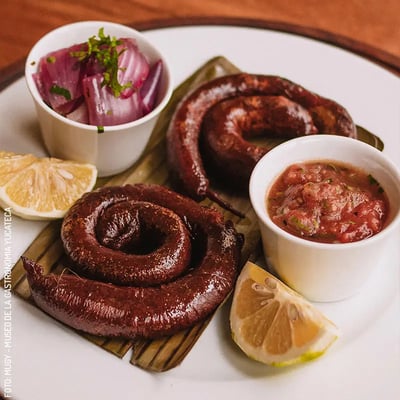
Longaniza de Valladolid. Pork sausage seasoned with garlic, pepper, and vinegar. As a standalone dish, it’s served with pickled onion, bitter orange, refried beans, tomato sauce, and handmade tortillas, but it can also be incorporated into other dishes as an ingredient. Planning to visit Valladolid? Here’s your guide to this Magical Village.
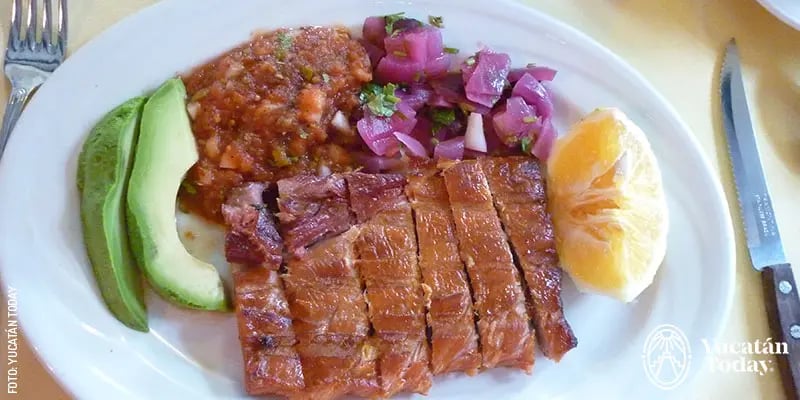
Carne Ahumada de Temozón. Wood-smoked pork meat; when served in tacos, you should get sides of bitter orange, avocado, red onion, tomato sauce, and beans. Find out more about Temozón, its sights, and specialties.
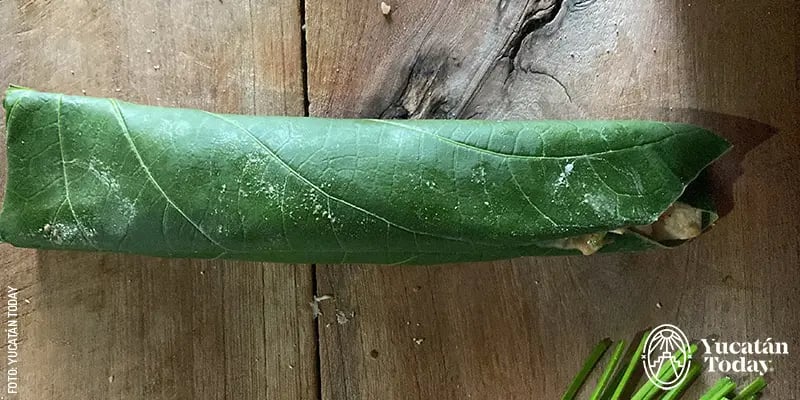
Kots’ob de Espita. Similar to a rolled-up tamal, Kots’obes are made from white beans, ground chili, pumpkin seed, masa, and other local ingredients wrapped in Hoja Santa (Mexican pepperleaf, or Piper auritum). In Espita you can find it grilled, fried, or steamed. Interested in visiting the Magical Village of Espita? Click here to find out what awaits.
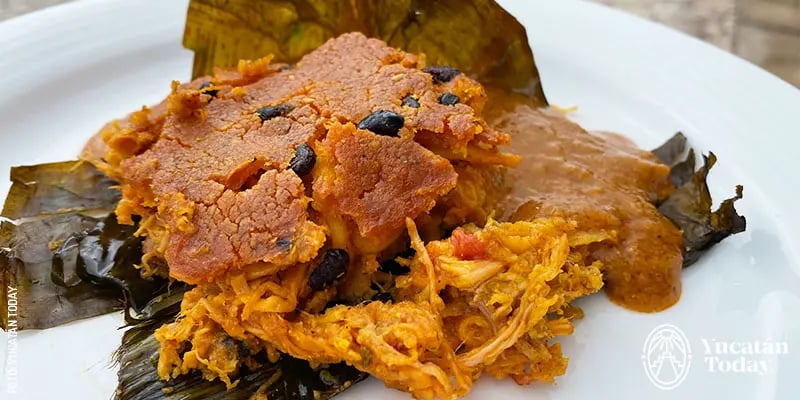
Mukbilpollo. Many describe this as a giant and crunchy tamal. It has a crispy, golden dough and a chicken, turkey, or pork filling (sometimes all of the above). It is baked wrapped in banana leaves, usually in a Píib underground oven. Mukbilpollo, known in Mérida as Pib, is traditionally served during November for the Janal Pixan festivities. Find out more about Mukbilpollo, its preparation, and its deeper meaning through our article Mukbilpollo, a Melancholy Ritual, or get a full overview of the dishes around the Yucatecan Day of the Dead celebrations.
Artículos relacionados
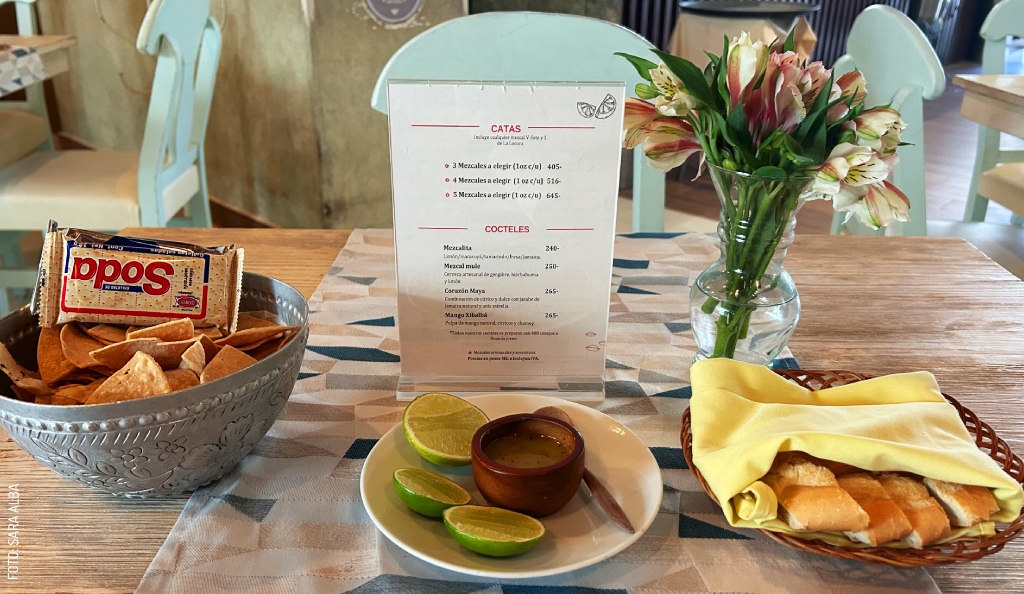
Saborea la frescura del mar en el restaurante La Pigua
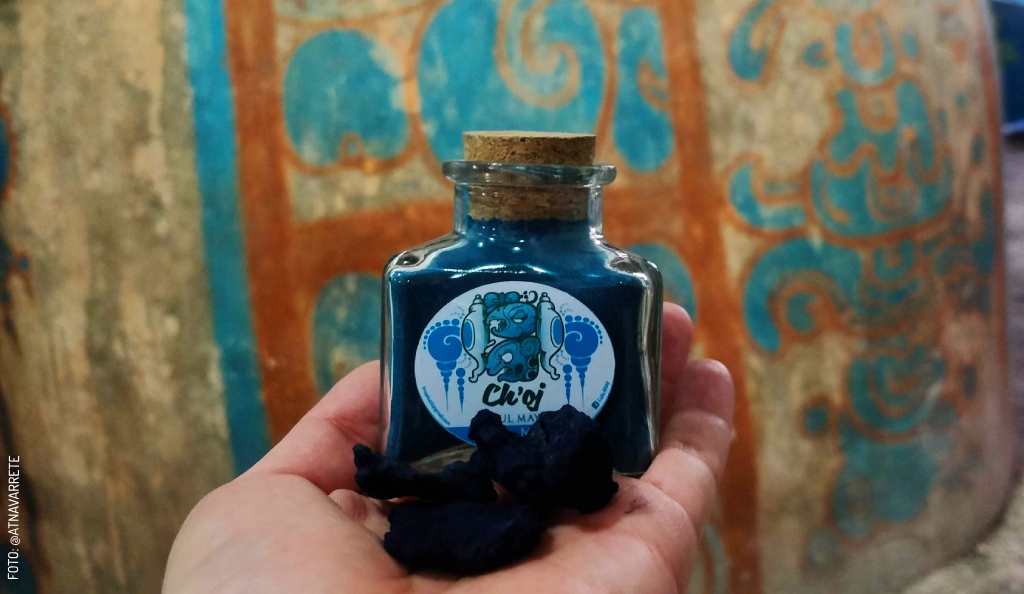
Cómo se elabora el azul maya

Identifica a las abejas yucatecas
Related Posts
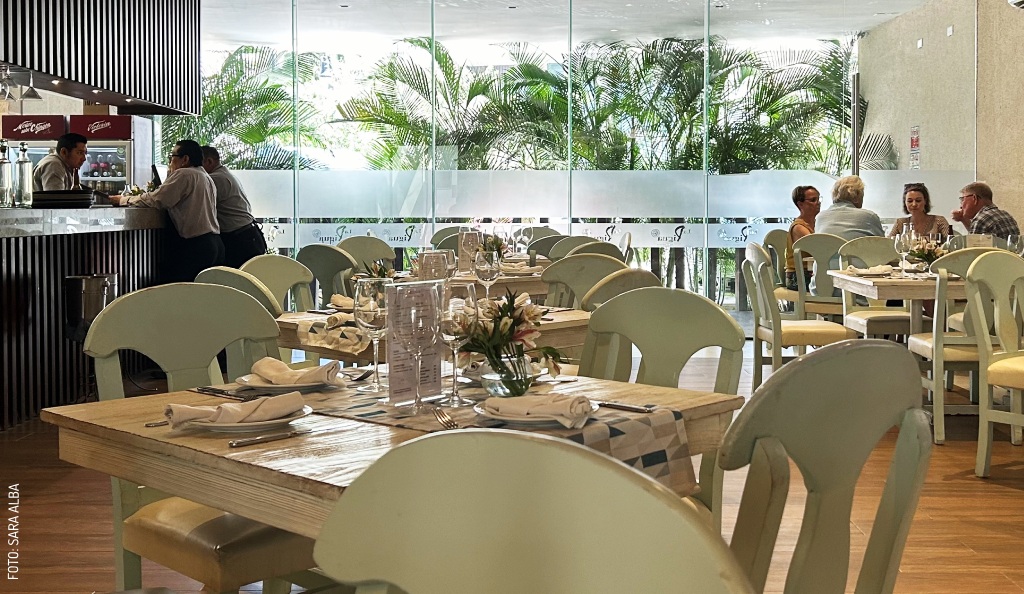
Savor the freshness of the sea at Restaurante La Pigua
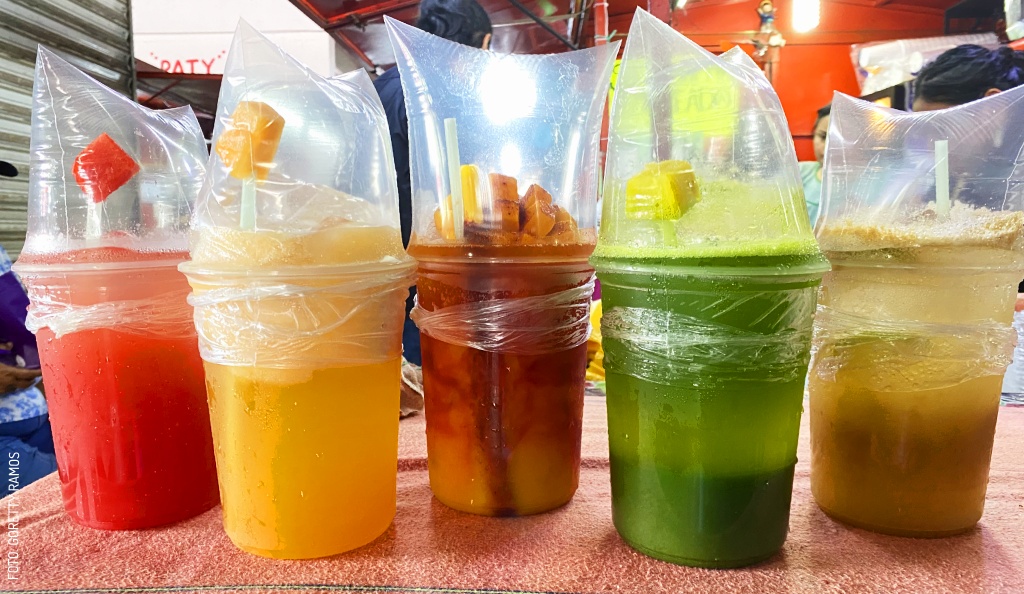
Refreshing drinks in the markets of Mérida
